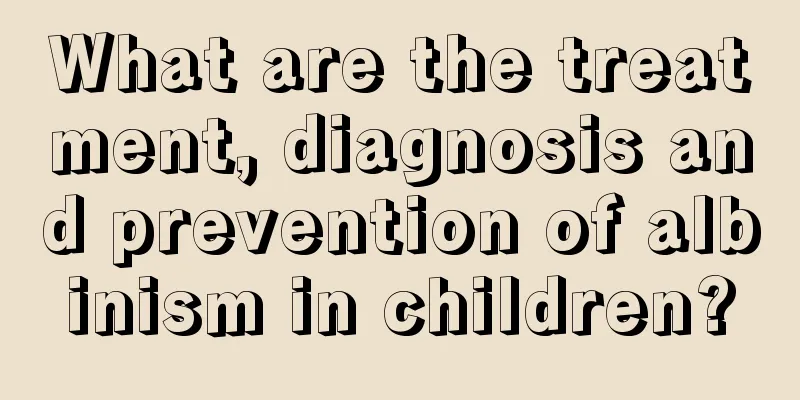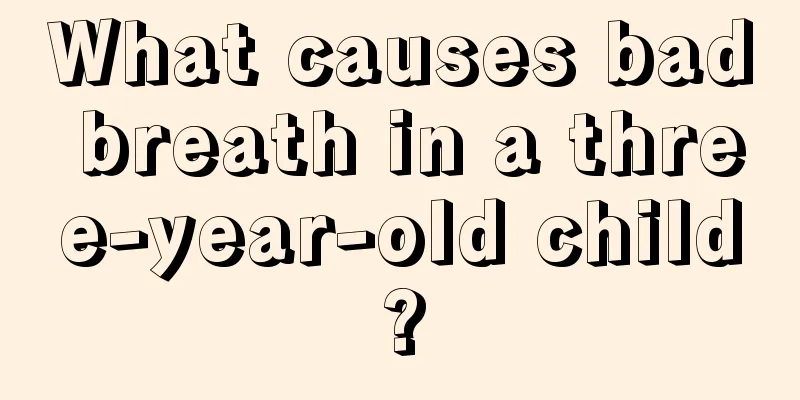What are the treatment, diagnosis and prevention of albinism in children?

|
Children nowadays are so happy. Their parents never skimp on their food, clothing, shelter, transportation, eating, drinking and playing. They don’t know what it is to be without food and clothing. They can never finish all the snacks and their toys are always the latest models. But they have gradually developed selfish habits and don't know what sharing means. This may be something parents need to pay attention to in the future. Here we will introduce to you a children's disease - childhood albinism - its treatment, diagnosis and prevention. 1. Overview Albinism is a genetic disease caused by mutations in different genes, resulting in defects in the biosynthesis of melanin or melanosomes, resulting in a lack of pigment in the skin, eyes, hair, etc. Due to the photophobia of albinism, they are relatively comfortable moving around at night and are therefore commonly known as the Children of the Moon. The average incidence of albinism in the population is 1:15,000. Based on this, it is estimated that there are nearly 90,000 people with albinism in the Chinese population, and one in every 60 people carries the albinism gene without showing symptoms. How is albinism diagnosed? The diagnosis of albinism is based primarily on ocular symptoms and signs. Differential diagnosis of various subtypes is critical. Tyrosinase activity determination is helpful for its classification diagnosis. Genetic diagnosis is currently the most reliable method for differential diagnosis and prenatal diagnosis. Genetic diagnosis of some albinism subtypes is difficult because their pathogenicity is not yet elucidated. For some genetic diseases, as long as one of the parents carries the disease-causing gene, the offspring will develop the disease. This is called dominant inheritance. Some genetic diseases require two disease-causing genes to cause the disease. This type of inheritance is called recessive inheritance. If a person has a disease-causing gene but does not develop the disease, he or she is a carrier of the disease-causing gene. So, two normal couples may give birth to a child with albinism. There are two types of albinism: systemic and localized. Partial albinism is a dominant trait, and children can develop the genetic trait as long as they inherit the defective gene from either parent. Systemic albinism is an autosomal recessive genetic disease, which means that clinical symptoms will only appear when the offspring inherit the disease-causing genes from both parents. That is, both parents are carriers of recessive genes. They themselves do not show abnormalities, but this recessive gene can be passed on to their offspring. III. Treatment and prevention of albinism The main harm of albinism is damage to vision. A very small number of albinism patients may die in childhood or middle age due to complications of immune deficiency or pulmonary fibrosis. It is one of the serious genetic diseases that requires intervention. Although local albinism is not very serious, if the lesions occur on the face or distal limbs, it will seriously affect the appearance, and many patients urgently require treatment. There is currently no cure for albinism except symptomatic treatment, so prevention should be the main focus. 1. Reduce consanguineous marriage through genetic counseling. It is one of the important preventive measures. 2. Prenatal genetic diagnosis. It is also an important safeguard to prevent the birth of children with this disease. Prevention should minimize the damage of ultraviolet radiation to eyes and skin. Some eyeglasses or surgical treatments may improve some vision, but it is difficult to fully restore it. The above is an introduction to the treatment, diagnosis and prevention of childhood albinism. It can be seen that the complete treatment of childhood albinism is relatively difficult and it mainly depends on prevention. There may be fundamental treatment methods in the future. In fact, this is the case with many diseases. We have already discovered them, but have not yet found the causes of the diseases, and cannot provide effective treatments. We can only hope for the future. |
<<: What is the treatment for hernia in infants and young children?
>>: What are the precautions for the high incidence of hand, foot and mouth disease in summer?
Recommend
Baby has diarrhea and watery stool
When a baby has diarrhea, what comes out is water...
What are the free pediatric vaccinations?
With the rapid development of the economy, the in...
What should I do if my child has nasal mucus?
We may have seen some friends with boogers in the...
What is the reason for the redness and pain of the little girl's vulva?
When a little girl has redness and pain on her vu...
Why do children have zinc deficiency?
In life, there are many diseases that seriously a...
What are the clinical features of heart disease in children?
Congenital heart disease is generally more common...
What should I do if my 11-year-old child is constipated?
Since children generally have weaker resistance a...
Introducing several physical cooling methods for infants with fever
Here are some physical methods to reduce fever in...
The child suddenly cried while sleeping
Everyone knows that when children are young, if t...
Baby has diarrhea and low fever
Every change in the baby after birth is watched b...
Is it good for children to take stomach-nourishing and digestion-promoting tablets regularly?
A common phenomenon among many children nowadays ...
Height of a three-year-old baby
If we have babies, we must be responsible for the...
What should I do if my 4-year-old baby has allergies?
Children around four years old already have stron...
What is the cause of a child's fever when teething?
It is a normal physiological phenomenon for babie...
How to remedy a child's cold after kicking off the quilt
There are many ways to remedy the situation when ...









